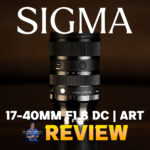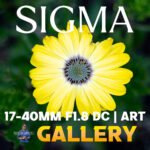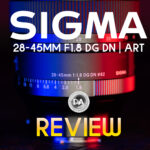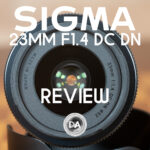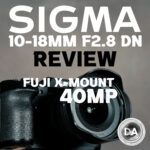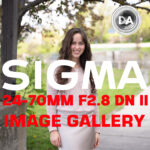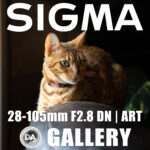
About five weeks I reviewed the new Viltrox 15mm F1.7 from their AIR series, and while I was researching competitors for that lens I realized that Sigma didn’t have anything wider than 16mm in their APS-C prime lenses specifically designed for mirrorless. That changes now, however, with the addition of the Sigma 12mm F1.4 DC DN | Contemporary. I liked the 16mm F1.4 and really liked the more recent 23mm F1.4, but the new 12mm DC is perhaps the most important addition to the series because it turns a very important new corner in Sigma’s lens design for the series. This is the first of the prime lenses in this series to receive an aperture ring, making it both a little more upscale and also a better fit on Fuji’s X-mount, where the first party lenses almost all have aperture rings. I’m reviewing the lens on Sony E-mount today, but it will also be available for Fuji X-mount and Canon RF mount. Is this the wide angle prime to choose on these platforms? Let’s dive in and find out!
Follow Me @ YouTube | Patreon | Instagram | Facebook | DA Merchandise | Flickr | 500px | X
Thanks to Sigma Canada (Gentec) for sending me a review loaner of this lens. As always, this is a completely independent review. *The tests and most of the photos that I share as a part of my review cycle have been done with the APS-C mode of my Sony a7RV.
__________________________________________________________________________________________________
AI SUMMARY: The Sigma 12mm F1.4 DC DN | Contemporary lens is a notable addition to Sigma’s lineup, filling a gap for APS-C mirrorless with a wider angle than previous offerings in the series. This lens is the first in Sigma’s primes to incorporate an aperture ring, enhancing its appeal, particularly for Fuji’s X-mount users. Praised for its optical performance, especially in sharpness and color rendition, this lens also features compact and lightweight design improvements, making it versatile for various photography genres, from landscapes to architecture. Despite minor shortcomings such as barrel distortion and softer corners, its advantages, such as low-light capability and compactness, position it competitively against other offerings on the market.
Strengths:
- Wide aperture at F1.4 enhances low-light performance and depth of field creative options.
- Compact, lightweight build with a premium feel, including an aperture ring.
- Excellent sharpness and color rendition across the frame.
- Versatile for multiple photography styles including landscapes and street photography.
Weaknesses:
- Exhibits notable barrel distortion requiring correction.
- Slightly soft corners, especially at wider apertures.
- Limited macro capabilities, though performs better than specified in practice.
- Higher price point compared to some competitors, although justifiable for its premium features and performance.
_________________________________________________________________________________________________
Here’s a look at the DC (APS-C) lineup on mirrorless thus far.
- Sigma 12mm F1.4
- Sigma 16mm F1.4
- Sigma 23mm F1.4
- Sigma 30mm F1.4
- Sigma 56mm F1.4
- Sigma 10-18mm F2.8
- Sigma 18-50mm F2.8
- Sigma 16-300mm F3.5-6.7 DC OS
- Sigma 17-40mm F1.8
Sigma dropped the DN designation from their lenses this year for the simple reason that DN was their means of designating mirrorless lens designs, which has become irrelevant now that all development is on mirrorless. The earlier lenses in the series came exclusively to Sony E-mount, and I felt like that lead to some stagnation. There wasn’t a lot of development in the first 9 years (the 30mm F1.4 was released in 2016!), with just 3 primes and one zoom, but as first Fuji and then Canon (and to a lesser degree Nikon) have opened up their platforms to APS-C third party lenses, Sigma has started to bring us new options more frequently, with the 23mm F1.4 last year, and the 16-300mm, 17-40mm F1.8, and now this 12mm F1.4 this year.
The 12mm focal length must be multipled by the crop factor of the cameras that it is designed for, which means that on Sony, Fuji, and (potentially) Nikon, the 1.5x crop factor of their APS-C sensors means an 18mm full frame equivalent. On Canon RF, the 1.6x crop factor means a 19.2mm focal length. Canon’s crop can be nice on telephoto lenses to give you a bit more reach, but it isn’t great on wide angle lenses like this. Either way, however, this is a great focal length, very versatile for shooting street:

Or shooting architecture and interiors:

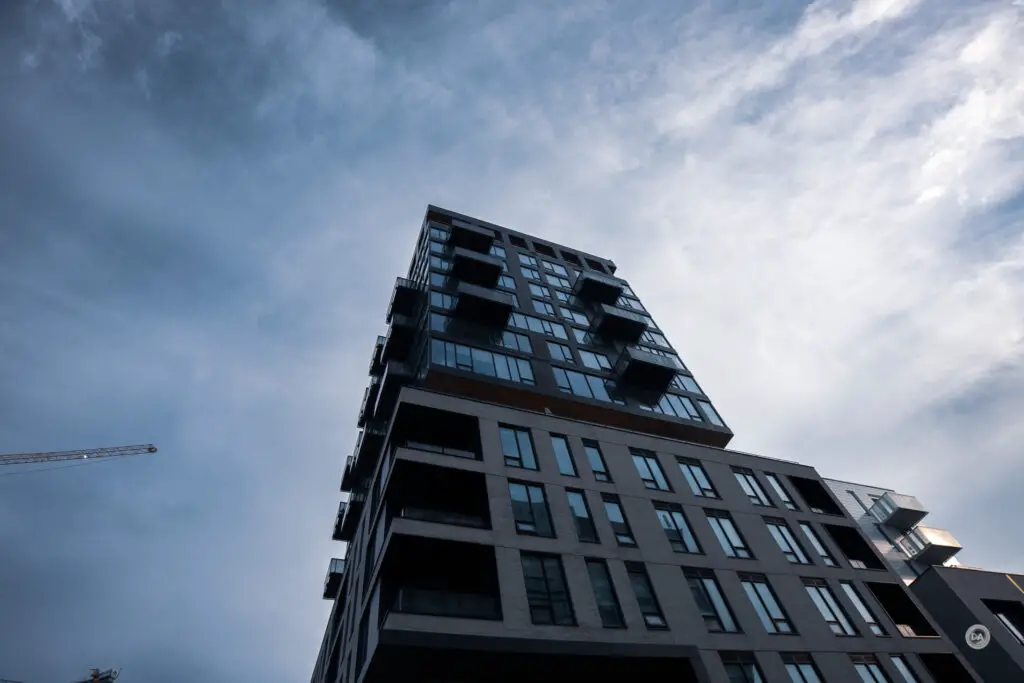

And, of course, it is a lot of fun for shooting landscapes.

The maximum aperture of F1.4 is always attractive, as it gives you low light versatility along with creative depth of field options. This is a strong lens…but does it have any weaknesses? We’ll find out together.
Build and Handling
As noted, this lens has moved Sigma’s lineup a bit more upscale in terms of the build. There is the aperture ring, obviously, but Sigma seems to have increased the degree of weather sealing as well, saying that this lens has “dust and splash-resistant structure”, whereas previously there was just a gasket at the lens mount on some of the lenses. What’s more, however, is that Sigma has managed to reduce the size of the new 12mm relative to a lens like the 16mm F1.4, which is the opposite of what you would expect. It is about 20% shorter than the 16mm F1.4, and it weighs just 225g (7.9oz), making this the lightest of the lenses in the series. The Fuji version is 10g heavier, while the Canon version is 25g more. Here’s a look at how the size compares.
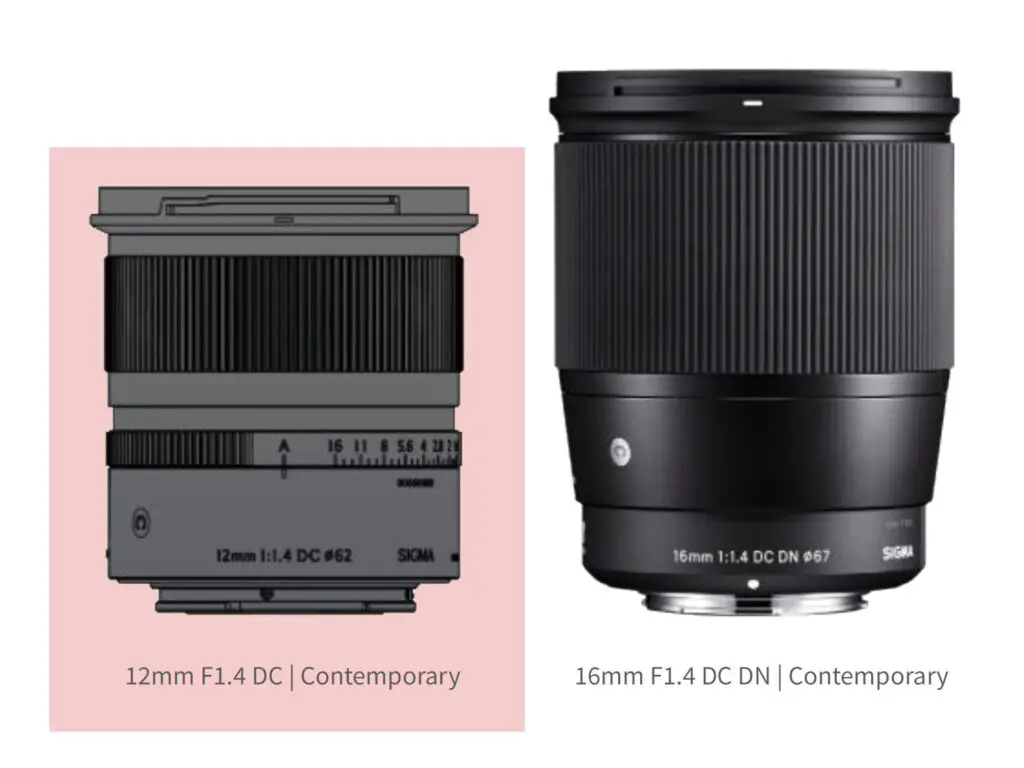
The physical dimensions are 68mm (2.7”) in diameter and 69.4mm in length (2.7”), about 10mm shorter than the 23mm F1.4 from Sigma I reviewed last year. The front filter size is 62mm. The form factor is perhaps most similar to the 10-18mm F2.8 zoom from Sigma.

There aren’t a lot of other 12mm APS-C lenses (more full frame than APS-C), but there is a Samyang 12mm F2 ($329 USD) along with a Sony 11mm F1.8 ($698 USD) and a Yongnuo 11mm F1.8 ($298 USD). The Sigma has the fastest aperture and is priced closer to the Sony at $629 USD. The weight of the Sigma (225g) falls on the high side of average, with the Sony the lightest at 181g, followed by the Samyang at 213g, then the Yongnuo 260g. That’s not bad, however, considering that the Sigma has the fast maximum aperture and joins the Yongnuo with having an aperture ring.
On the Fuji side of things there really isn’t anything close, with a 14mm F2.8 and a 16mm F1.4 being the closest comparable. Viltrox does make a 13mm F1.4 lens in X-mount, but that is considerably heavier at 420g and is an additional 20mm longer. I would say that Sigma lines up well with competing lenses in perhaps every category but price, but it also hits a sweet spot for the combination of maximum aperture and size.
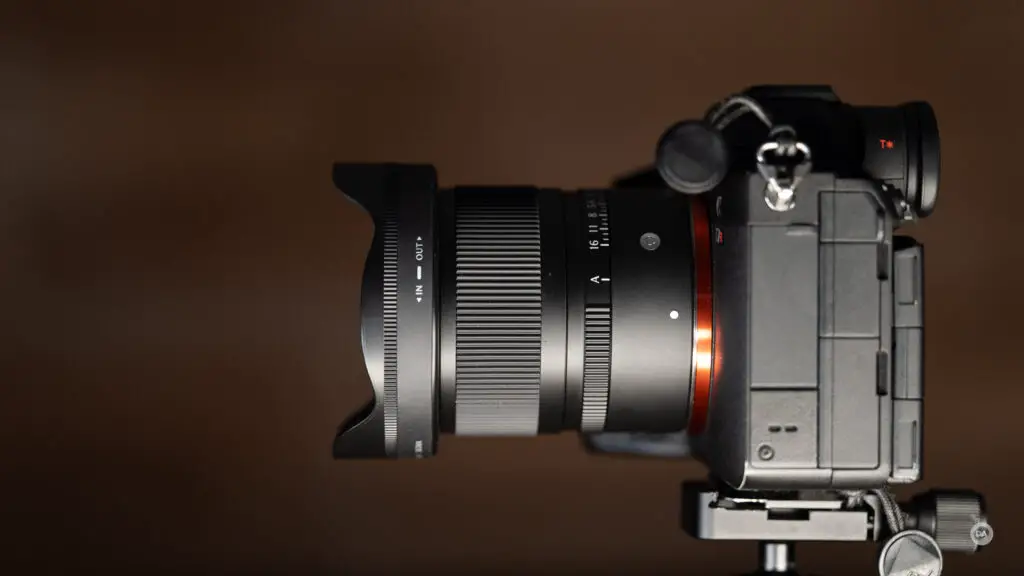
Sigma’s “Contemporary” branding is becoming even less meaningful as they move lenses like this upscale. It still doesn’t have as many features or as nice of build as the ART series, but that gap is narrower now. What we don’t have here is the ability to declick the aperture ring or any Fn/Custom buttons. This is essentially at the Fuji X-mount standard.
This is still forward progress, however, and I enjoyed having the aperture ring while traveling to Nova Scotia and Prince Edward Island in eastern Canada. It has markings at the full stops and one third stop detents in between. There’s a bit of resistance at F16 before moving into the A (Automatic space), though I would prefer that to be a bit heavier. The Canon RF version will have a control ring in place of the traditional aperture ring.

The aperture iris has nine rounded blades, but you can still get a very nice looking sunstar with the lens stopped down.
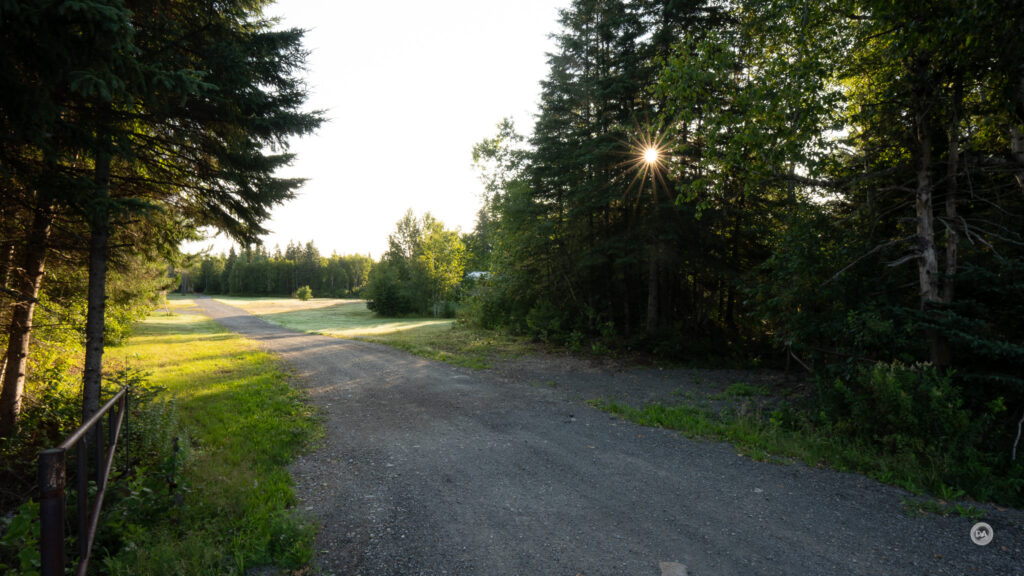
The manual focus ring has a nice level of damping and moves smoothly. Like other lenses designed for mirrorless cameras, this is a focus-by-wire system in which input from the focus ring is routed through the focus motor. It is actually the focus motor that moves the elements, making manual focus more of an simulation than a direct movement of the elements. Some lenses pull this off better than others, and the Sigma 12mm F1.4 is one of them. I will note that the lens will automatically alert the body to magnify the image when you are manually focusing, which is a big help in visually confirming focus.
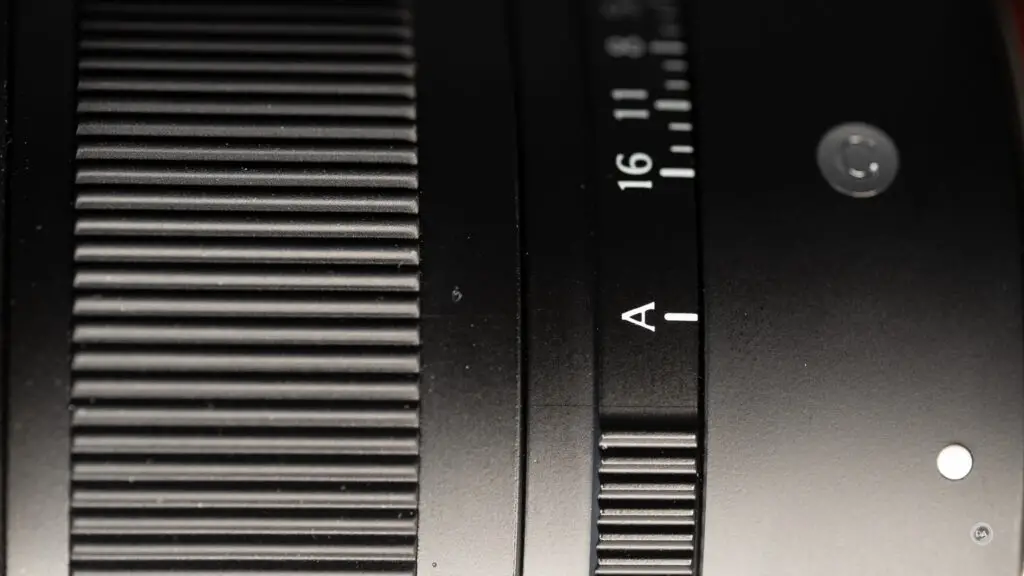
The 12mm Contemporary has a weather sealing gasket at the lens mount, but, what’s more, there are seals at the rings and the front element as well, as you can see from this diagram.
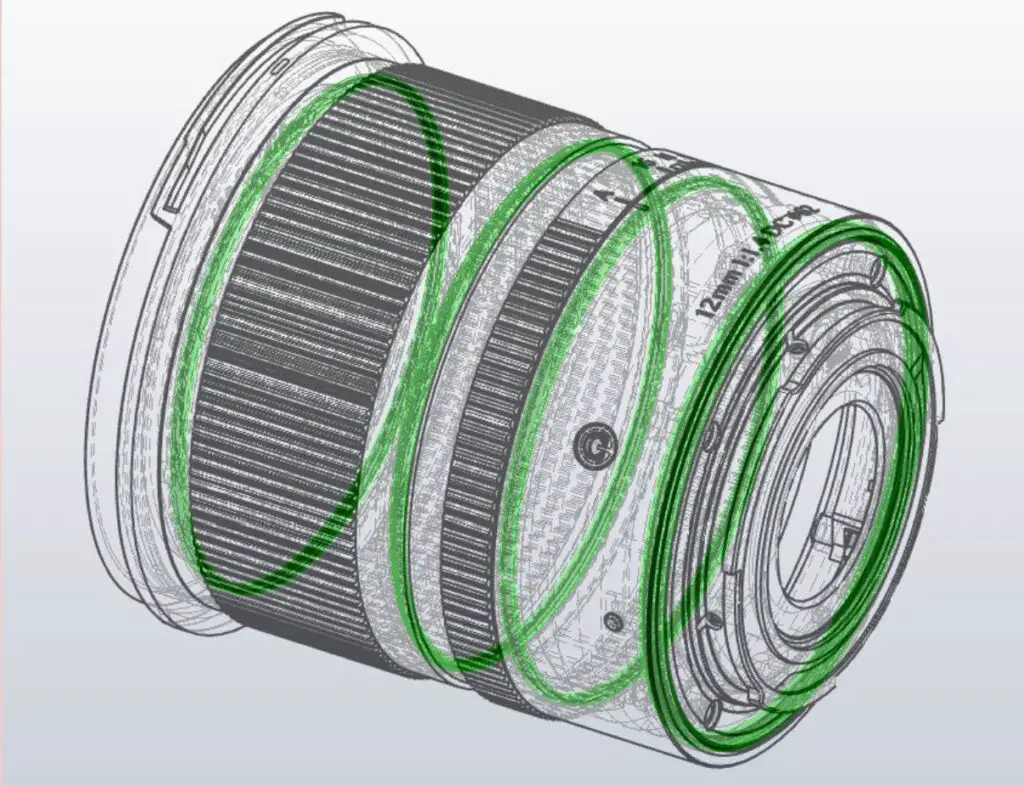
While my loaner copy didn’t come with retail packaging, I see that the lens comes with a pouch, hood, and the two caps. The petal-shaped lens hood is typical Sigma, which is to say nicer than most. It has a rubberized section along with a ribbed texture to help grip it for mounting and unmounting, and there are ribs on the interior to help deflect light from bouncing around. The hood can be reversed for storage.
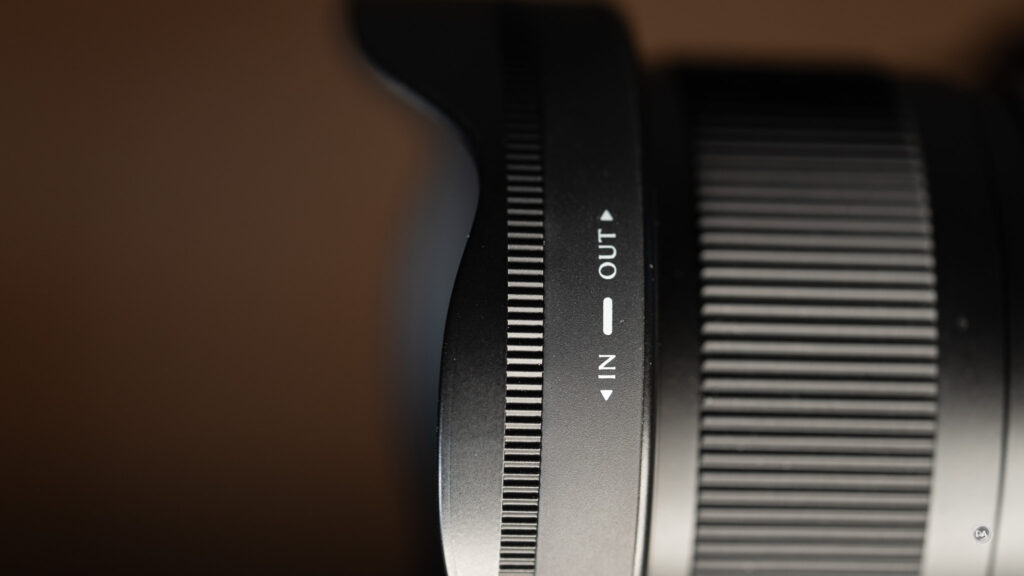
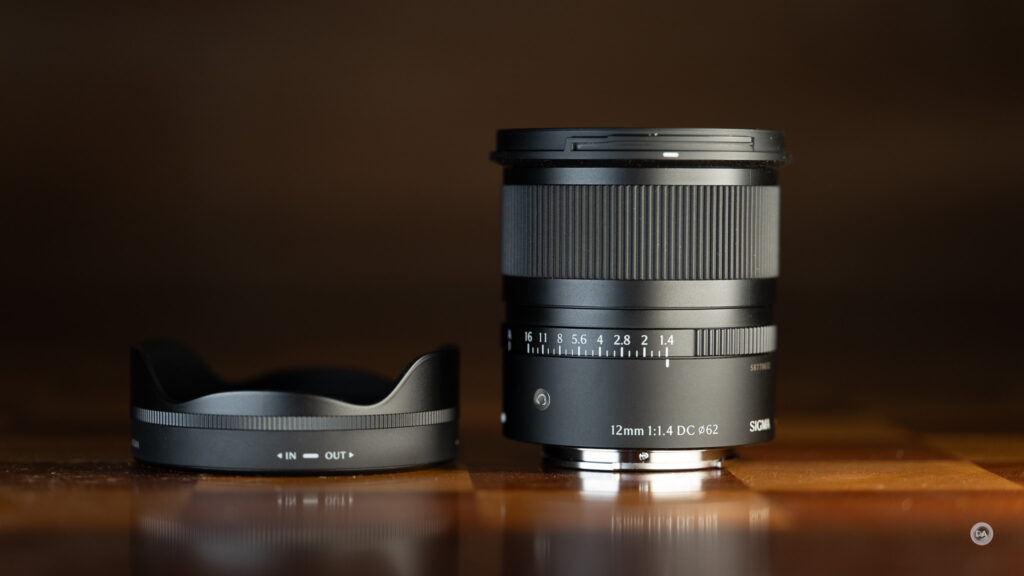
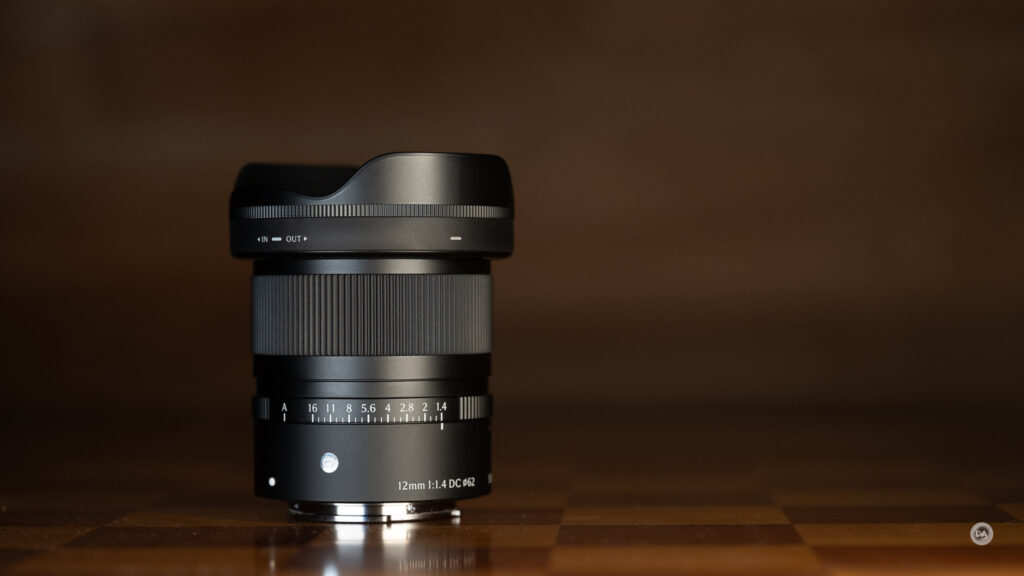
The 12mm DC can focus down to 6.8″ (17.2cm), where it provides a roughly 0.12x magnification figure. That’s not particularly high for a lens like this, with both the Sony and the Yongnuo allowing for considerably closer focus. At least that is what the specs say. In reality, I was to focus more closely and get a higher level of magnification than the specs suggest.

In fact, if I compare with the recent Viltrox AIR 15mm F1.7, which had a rated 0.10x magnification, the results are not close (as they should be according to the numbers) but rather the Sigma shows about double the level of magnification. I’m not quite sure what to make of that.
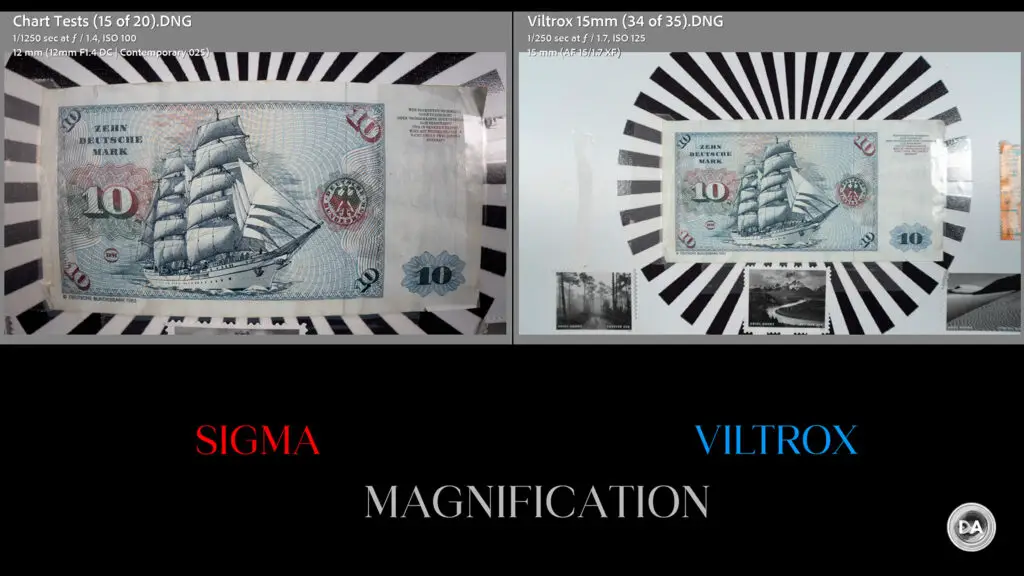
Up close performance is okay, but the plane of focus isn’t particularly flat. The close focus distance combined with the F1.4 aperture allows backgrounds to be strongly defocused.

The lens was a joy to bring along while traveling. It is compact and lightweight, and the handling in the field is very nice. I liked the addition of the aperture ring, and, as we’ll see, it proved a great little optical instrument. The price tag of $629 USD feels a little dear, but part of that is the reality that US pricing is a little higher in 2025 due to new tariff policies. It is also a more premium lens than previous lenses in the series, and so it is priced accordingly.
Autofocus for Stills
Sigma continues to utilize a stepping focus motor (STM) in these smaller lenses as the elements are smaller and lighter than lenses with an F1.4 aperture designed for full frame. Sigma notes that the 12mm DC actually has just a single focus lens rather than a focus group, meaning that the focus motor has less mass to move and can provide more thrust.
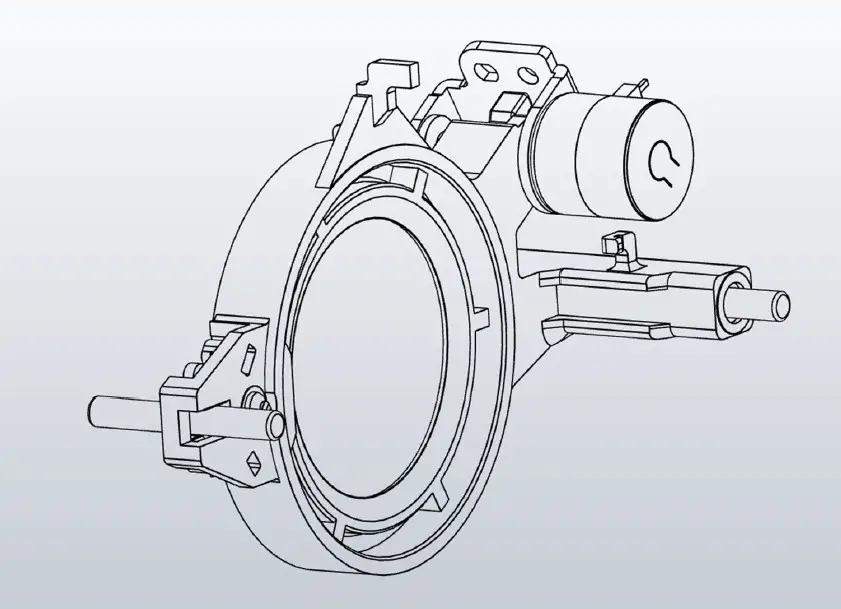
I traveled with the lens extensively and always found focus snappy regardless of what shooting situation I was in. That included some night shooting in Old Quebec City:
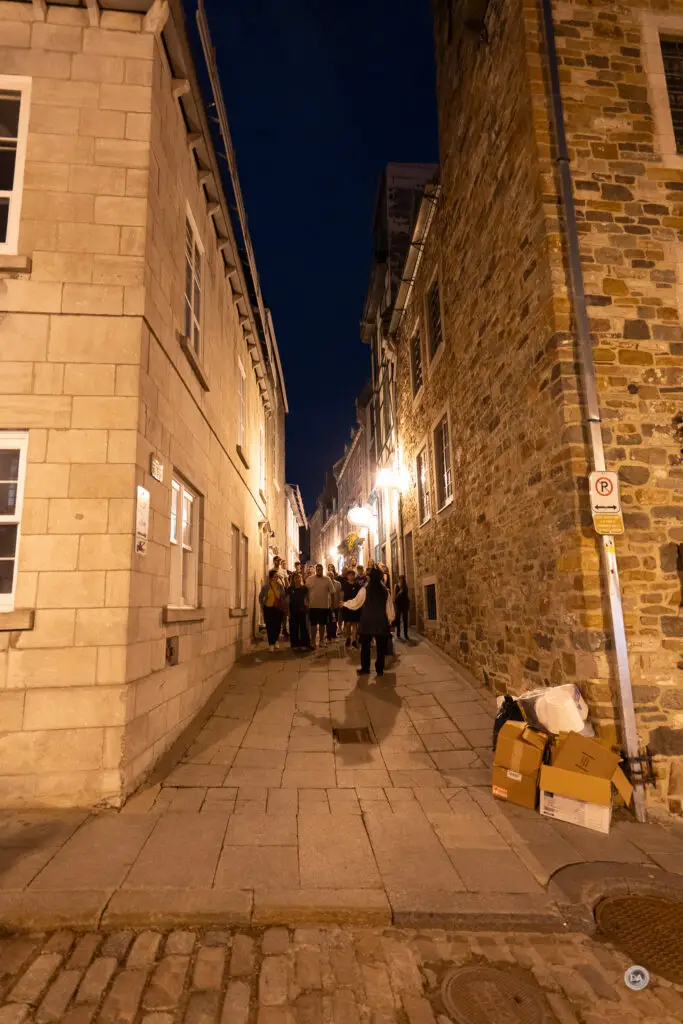
Eye AF worked well as I took photos of my wife in a variety of interesting locations.






Focus speed in my formal tests was nice and snappy with near instant focus shifts from near to far subjects. The only sound I could hear was the sound of my fingertip moving on and off the shutter button; the focus motor was essentially silent.

I got the shots I wanted in all the conditions that I was in; what more can I ask of a focus system?
Video AF
During my focus pull test I heard no focus noise despite working in a near silent environment. Focus pulls were smooth and quick without pulsing or settling. Focus breathing is minimal.
My hand test where I alternately block the camera’s view of my face with my hand and then remove it was slightly mixed. Sometimes it transitioned from my hand to my face and back flawlessly, but sometimes focus seemed to be on my wrist rather than on my hand, as if focus didn’t pull all the way back.
Focus was stable in my various video clips for real world use, however, with no pulsing or hunting. This is a great vlogging focal length, and the focus was stable in that setting even when I moved through varied lighting conditions.
In short, the focus system is excellent, and I have no concerns to report.
Image Quality Breakdown
Sigma’s lineup of F1.4 DC DN lenses have all been very strong optically, and the 12mm F1.4 is certainly no exception. This is an optical design of 14 elements in 12 groups, including 2 SLD and 3 Aspherical elements. Each of the aspherical elements are double sided and this is key to developing a more compact lens that continues to have high optical performance. The MTF looks fantastic even at F1.4, with a high degree of sharpness that reaches right into the corners.
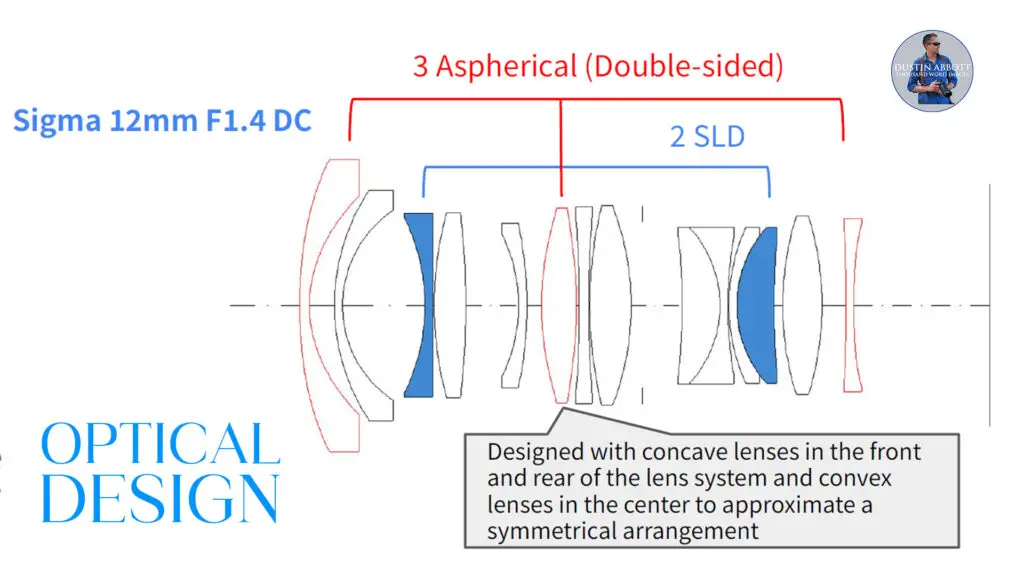
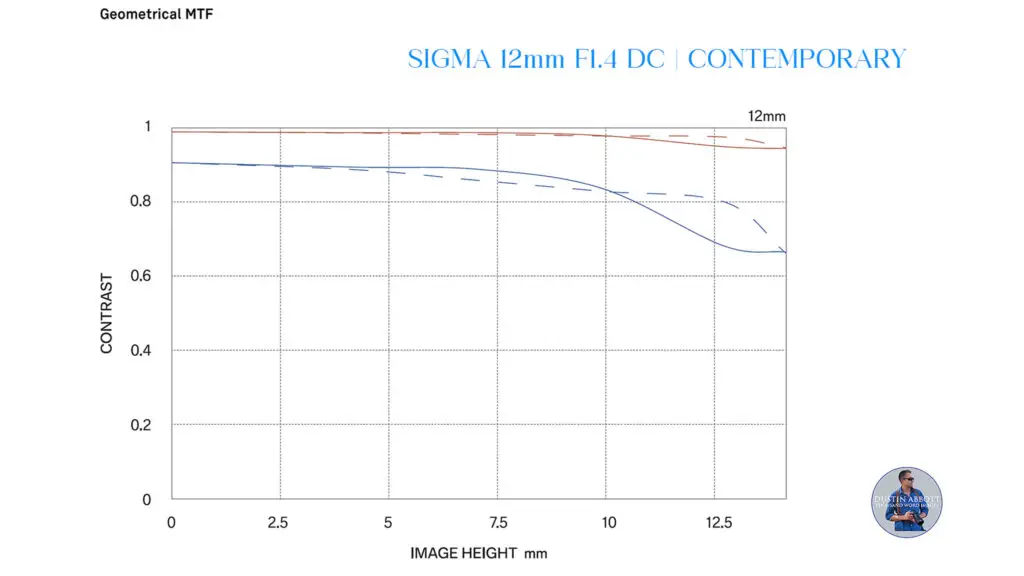
There’s no question that the performance looks better than the 16mm F1.4 at all points in the frame, which is impressive considering that the 12mm DC is smaller, lighter, and wider. You can see from this MTF comparison that I’ve assembled that there is far more of the frame that lies above the 80% threshold (which looks excellent even on high resolution cameras) from the 12mm.
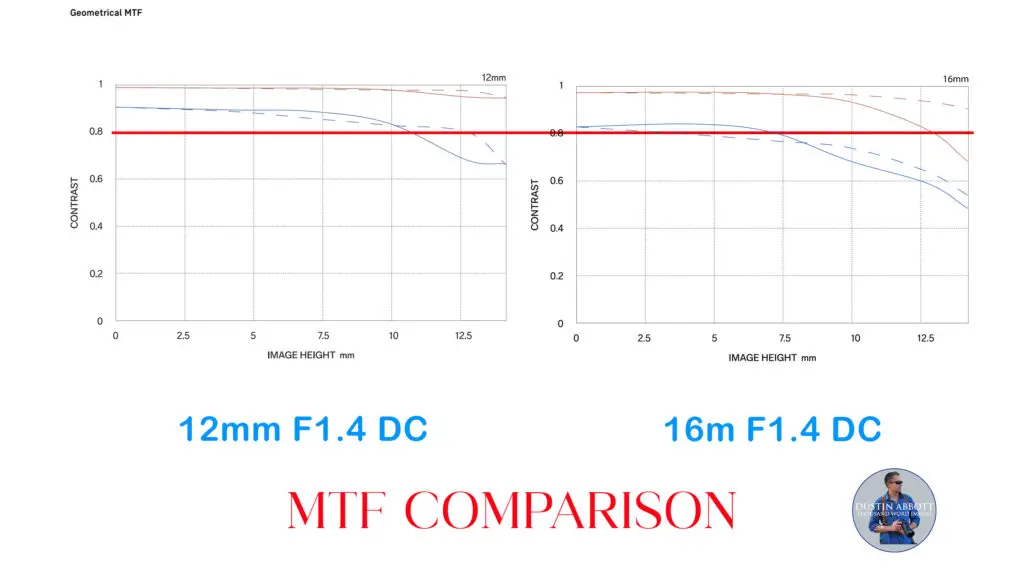
Those looking for a stealth full frame lens will be disappointed. Here’s what an image looks like shooting full frame (left) versus what it looks like in APS-C on the right.
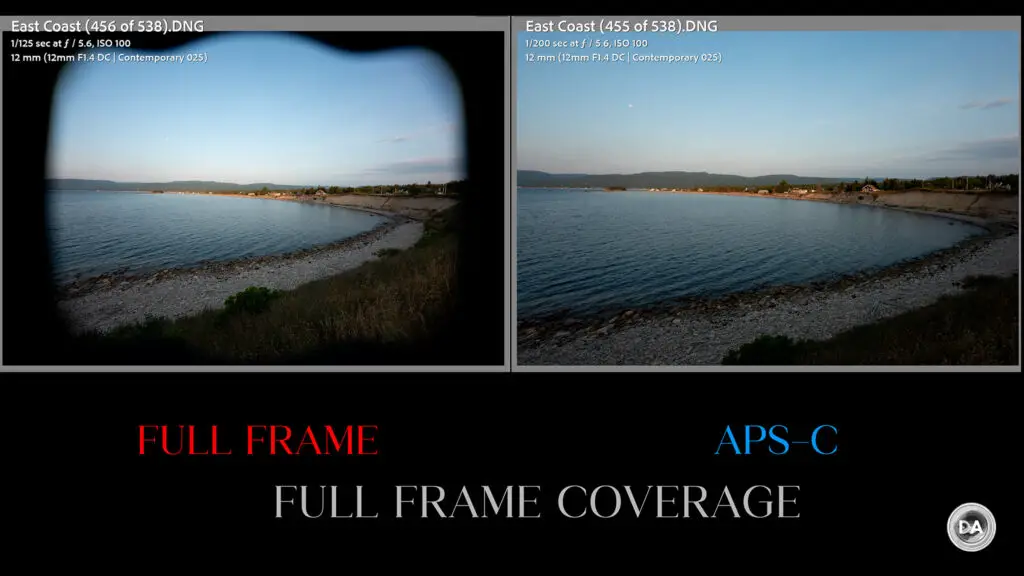
If I try to crop down the full frame image, I can get about 32MP worth of image versus the 26MP I get with the APS-C crop, so a little wider but not really worth it.
Let’s take at some of the technical aspects of performance. Sigma lenses enjoy good profile corrections on either Sony, Fuji, or Canon platforms, but we’ll look past the corrections to the optics of the lens itself. Here’s a look at my vignette and distortion chart, with the uncorrected result on the left and a manually corrected result on the right.
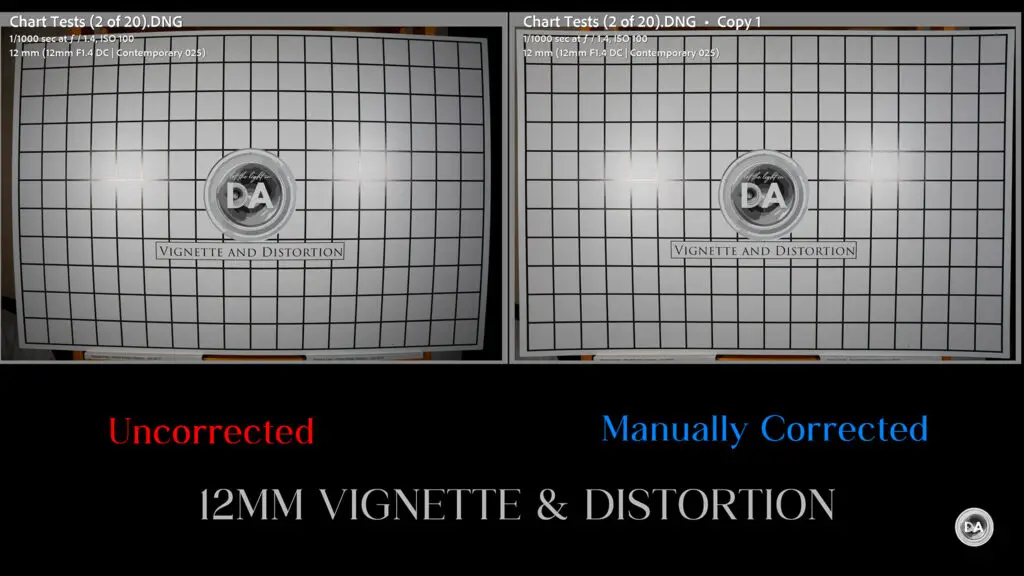
This is often the place where I’m most disappointed in Sigma wide angle lenses, as they tend to lean heavily on correction profiles rather than optical corrections. That is very true here, with a strong amount of barrel distortion visible. I had a to use a +26 to correct the barrel distortion, though on the positive side the correction was reasonably linear. Vignette was less serious, requiring a +50 to correct, which is right under two stops and better than what I typically would find on a wide angle lens with an F1.4 aperture.
You will definitely need to correct that distortion, however, as you can see from this comparison that there will be a pretty wicked curve to straight lines near the edge of the frame without correction. Fortunately, Sigma’s profiles in camera or for software will do a great job of correcting, as you can see here.
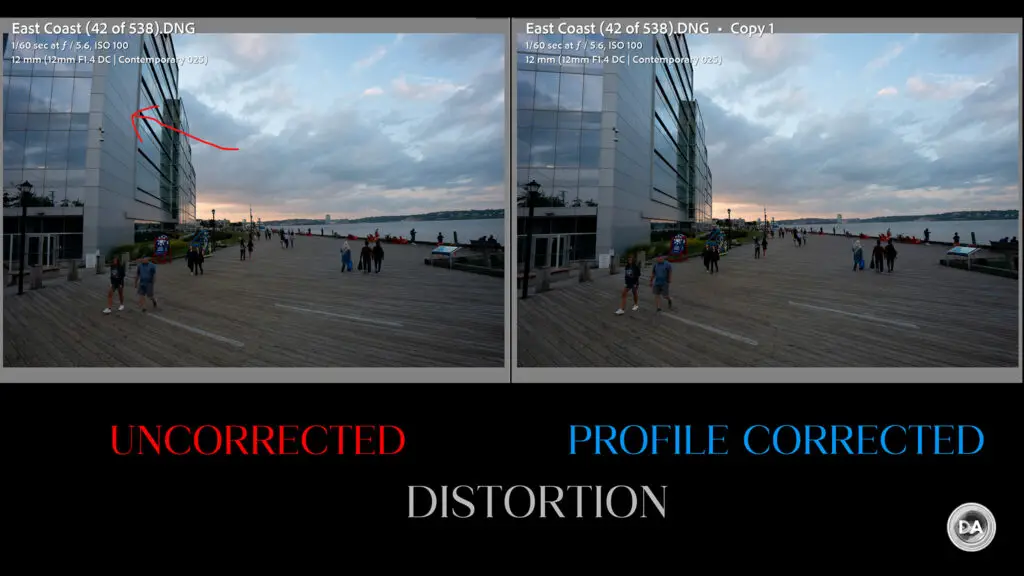
It isn’t unusual for a wide aperture prime lens like this one to suffer from some longitudinal chromatic aberrations (LoCA), and that’s true here. I can see a bit on my test chart, primarily in the form of some blue-green fringing after the plane of focus.
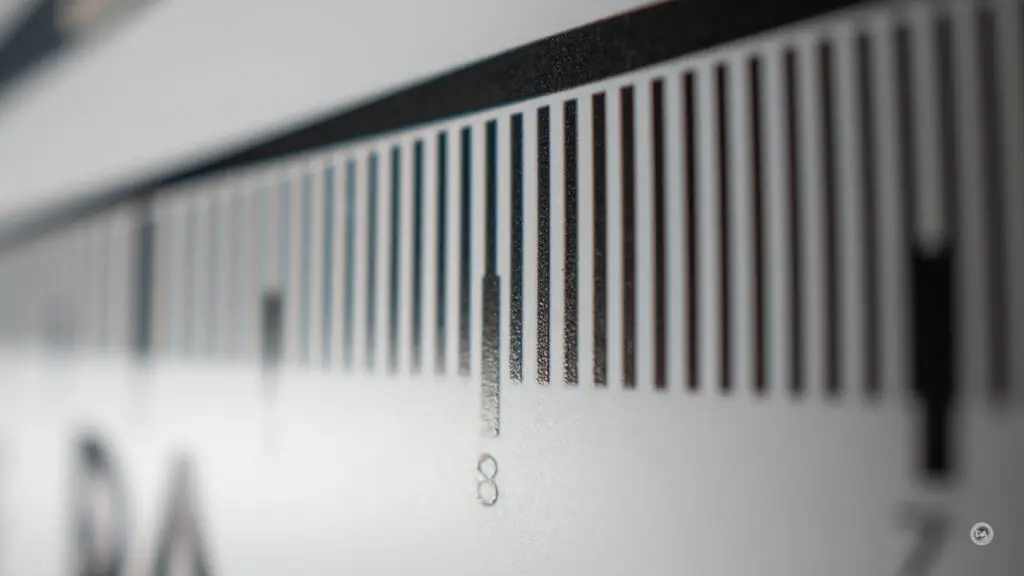
I could also see a bit of fringing on the shiny bits of my Dad’s old SLR.
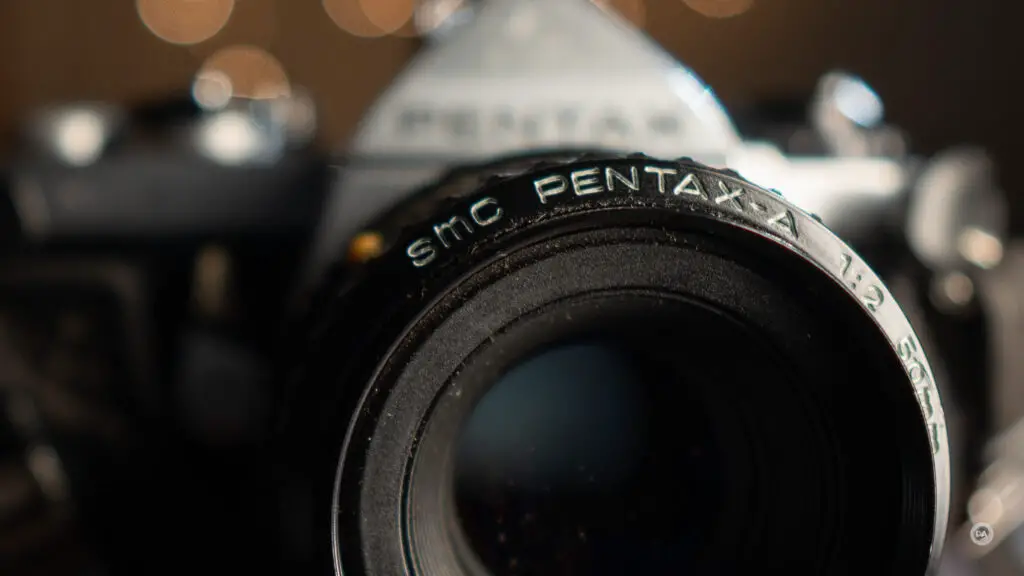
The situations where you have this shallow a depth of field will be very rare with a wide angle lens like this, so most of the time the LoCA shouldn’t be a big deal.
I saw little evidence of lateral chromatic aberrations (LaCA) along the edge of the frame in either my chart tests or any real world images. I consider this to be more of a priority with wide angle lenses.

Nothing too concerning here. We’ll move on to testing sharpness. The sharpness tests are done on the APS-C mode of my Sony a7RV, which has 26MP of resolution, the highest current standard on Sony. You can get higher APS-C resolution on either Canon (32MP) or Fuji (40MP), so expect standards to be a little more exacting on either of those platforms. Fortunately this lens is sharper than pretty much everything else available on any of these platforms. Here’s a look at the test chart we’re using for the tests.

If we look closely wide open at F1.4 (crops are at roughly 200%), we find that the lens produces nice resolution results all across the frame. There is a bit more softness in the corners, but not bad at all.



Here’s an F1.4 shot of my wife in Halifax Public Gardens, and you can see that detail is crisp on her face.


Here’s another shot in the Halifax Harbor, and even at F1.4 the detail is not only good in the center but quite good in the corners as well.



The Sigma 12mm DC also showed very good centering, with consistent sharpness everywhere I looked. Sigma’s quality control is very strong at this point.
Stopping down to F2 shows a definite improvement in contrast across the frame.

By F2.8 we have reached very near peak sharpness, with little more gains to be had in the corners. The lens doesn’t really sharpen up much further following about F2.8, and the corners were acceptably good at landscape apertures but not what I would call exceptional.






This is one of those lenses optimized to give you most of your performance at large apertures, and it doesn’t steadily grow sharper as you stop down like old school lenses did.
After F11 there is a mild softening effect as diffraction starts to set in. By F16 (minimum aperture) diffraction has really softened the image even on the 26MP resolution sensor. Expect the effect to be worse still on a high-resolution Fuji body.

You don’t really buy wide angle lenses for the bokeh, but the bright F1.4 aperture does create some space to experiment with depth of field. I found that bokeh looks fairly good in some situations, like this.

But here we see a bit more outlining than what I would like, creating a bit of a “soap bubble” effect in the specular highlights.

An image like this starts to look busy to my eye.

At the same time, however, I don’t want to critique too much, as that isn’t really the purpose of this lens.
I thought color rendition was excellent. I sometimes find APS-C wide angle lenses to be a bit lacking in this area, but I thought the Sigma acquitted itself well. Colors are nicely saturated but don’t feel comical in any way. I liked the global look of the images I took with the lens.



Get something amazing like the Chateau Frontenac in view, and the results are pretty magical.

I was also impressed with flare resistance. I never hesitated to shoot right into the sun at various apertures, and had no issues. There was little loss of contrast and no big ghosting blobs to ruin the image, and as a bonus, the sunstars look pretty good, too.
Pulling off an optically sound F1.4 prime at 12mm in this small of a form factor is impressive. I still prefer the nuance of a bigger sensor, myself, but this is the kind of lens that could really sell a photographer on the merits of traveling small and light. Here’s a little mini gallery of additional images to enjoy.
Conclusion
I was interested in this lens when Sigma told me about its existence, but even more interested once I handled it and found it both smaller and more feature rich than previous options in the series. There’s a whole new competitive market of compact lenses emerging fueled by lenses like Viltrox’s AIR series, and while Sigma doesn’t try to compete on a price level, they are coming with a more complete premium package relative to the AIR series. The Sigma 12mm F1.4 DC | Contemporary seems positioned to go right at first party lenses from Fuji or Sony, and that is where this lens will be more competitive as a value proposition.

There are a few minor flaws with the lens, with more barrel distortion than what I would prefer and corners a bit softer than I would like, but it’s not really like the competition is really better in these metrics. What’s more, the Sigma sports less vignette than most of the competition.

I can definitely see this lens having success, particularly considering that on Fuji and Canon there are very few lenses this wide, and definitely none with this wide of aperture. The ability to shoot at F1.4 really adds versatility for low light scenes, and the fact that you get that big aperture without a size and weight penalty should tip the scales in favor of the 12mm DC. Keep em’ coming, Sigma.

Pros:
- More feature rich than previous lenses in the series
- Compact and lightweight
- Large, bright maximum aperture.
- Has an aperture ring
- Has more thorough weather sealing
- Autofocus is very quick and accurate
- Very strong wide open sharpness
- Contrast is good
- Vignette well controlled
- Good color rendition
- Excellent flare resistance
Cons:
- Strong barrel distortion
- Corners never really sharpen up
_________________________________________________________________________
GEAR USED:
Purchase the Sigma 17-40mm F1.8 ART @ B&H Photo | Adorama | Amazon | Camera Canada | Amazon Canada | Amazon UK | Amazon Germany
Purchase the Sigma 28-45mm F1.8 ART @ B&H Photo | Nuzira | Adorama | Amazon | Camera Canada | Amazon Canada | Amazon UK | Amazon Germany
___________________________________________________________________
Purchase the Sony a7RV @ B&H Photo | Adorama | Amazon | Camera Canada | Sony Canada | Amazon Canada | Amazon UK | Amazon Germany
__________________________________________________________________
Purchase the Sony a7IV @ B&H Photo | Adorama | Amazon | Camera Canada | Sony Canada | Amazon Canada | Amazon UK | Amazon Germany
_________________________________________________________________
Purchase the Sony Alpha 1 @ Camera Canada | B&H Photo | Adorama | Amazon | Sony Canada | Amazon Canada | Amazon UK | Amazon Germany | Ebay
_________________________________________________________________
Want to support this channel? Use these affiliate links to shop at: B&H Photo | Amazon | Adorama | Camera Canada | Amazon Canada | Amazon UK | Ebay | Make a donation via Paypal
Buy DA Merchandise https://bit.ly/TWIMerch

Keywords: Sigma 12mm, DC, ART, Sigma 12mm F1.4, Sigma 12, F1.8, Sigma 12mm F1.4 Review, #SIGMAEmount, #SIGMA #SIGMA1412Contemporary, #SIGMAArt, #SIGMADC, APS-C, Review, Sony E, Canon RF, Fuji X, Review, Hands On, Dustin Abbott, Real World, Comparison, Sharpness, Bokeh, Flare Resistance, Autofocus, Image Quality, Sample Images, Video, Photography, let the light in, weathersealing, #letthelightin, DA, #Sigma12mmF1.4, #APSCLensReview, #SigmaMirrorlessLens, #OpticalPerformance, #SigmaContemporary, #VideoAutofocus, #WeatherSealedLens, #Sigma17-40mmVs1835mm, #SonyFujiCanonLens, #CameraGearReview, #FlagshipAPSCLens, #ImageQuality,

